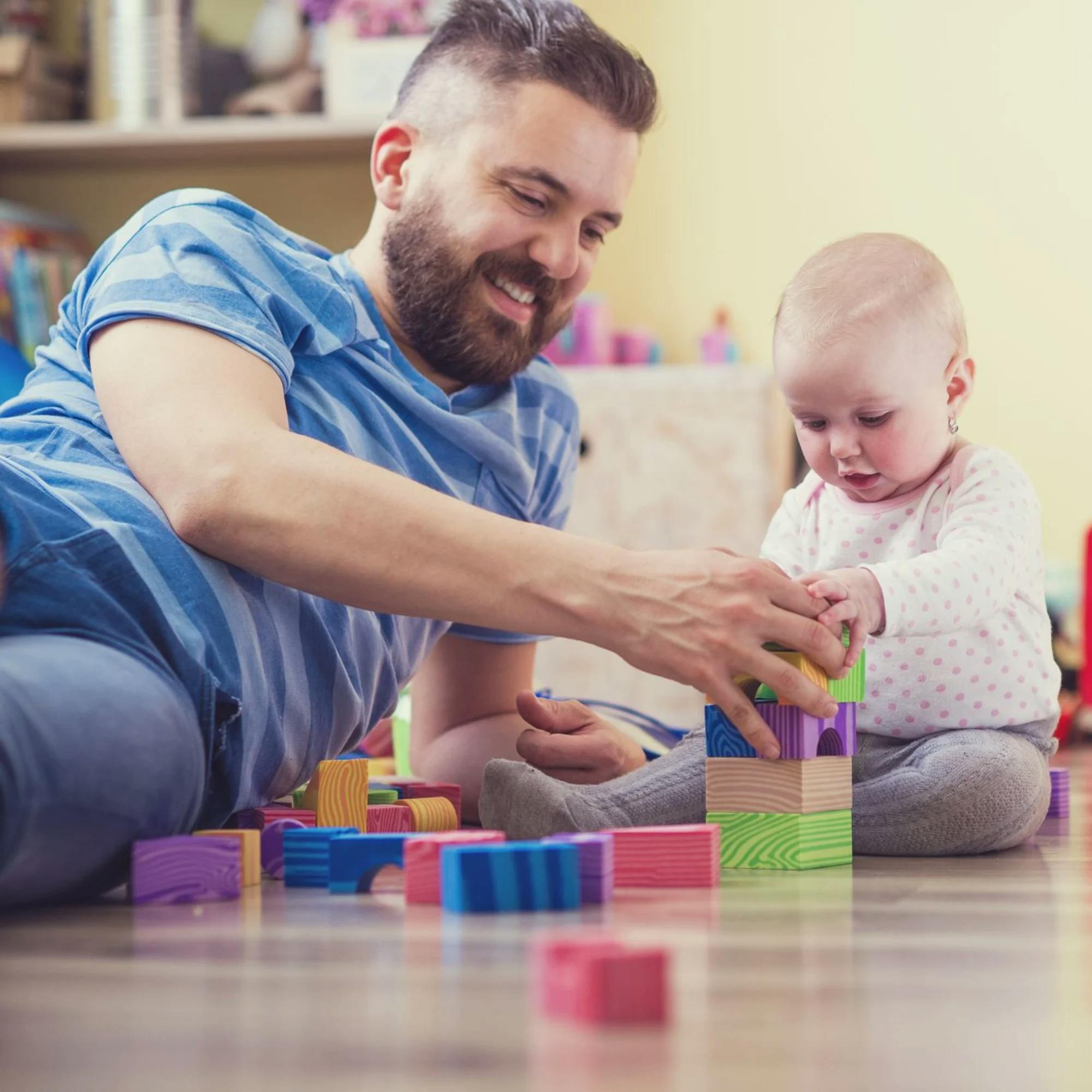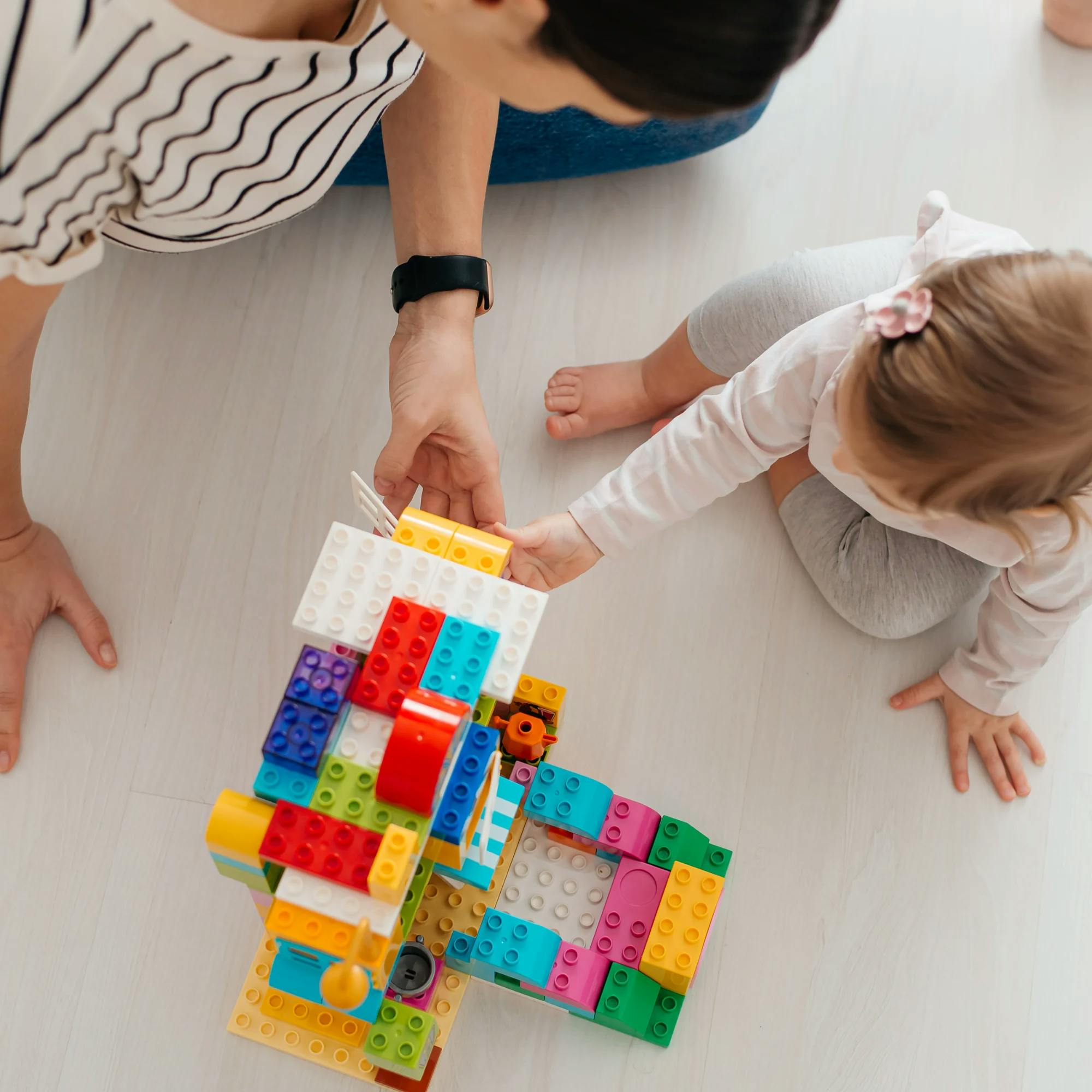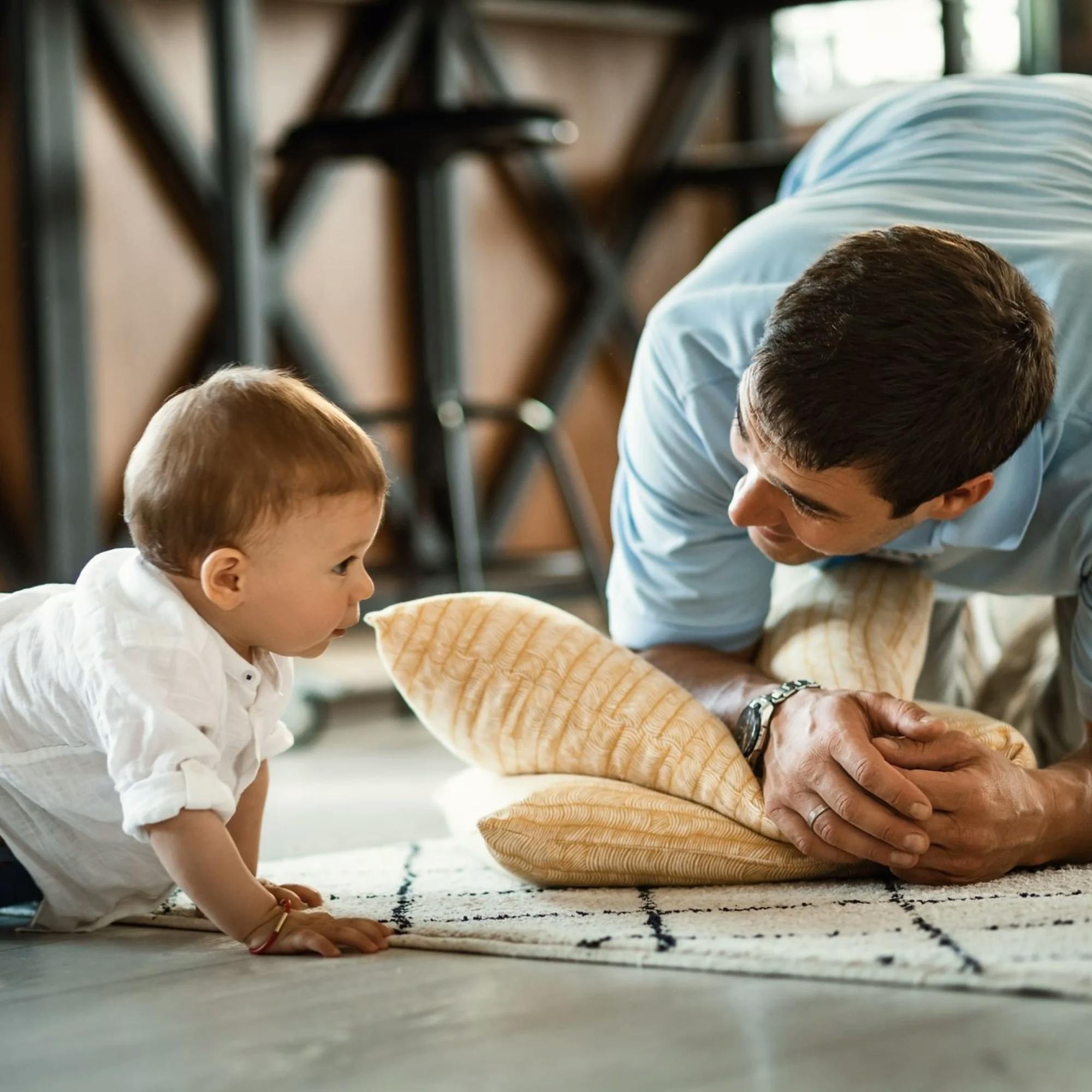
How–and Why–to Speak “Parentese” with Your Baby
 Abby Barnes, M.S., CCC-SLP
Abby Barnes, M.S., CCC-SLP
You may not have heard of “parentese,” but chances are good it’s a language you’ve spoken. Parentese is how speech-language pathologists commonly describe “baby talk.” It’s the way we tend to speak to an adorable little face looking up at us. Maybe our voice suddenly goes higher, or our tone becomes sweeter, or our eyebrows rise up. Why do babies make us do that?! For some adults, it’s almost automatic–a natural reaction we just can’t help. What’s pretty amazing is that our tendency to talk to babies in this way is scientifically proven to enhance their speech and language skills.
While baby talk, or parentese, does involve using a higher pitch, there’s much more to it. Read on to learn about the most effective way to talk with your baby, why parentese is important, and how you can begin using it today!

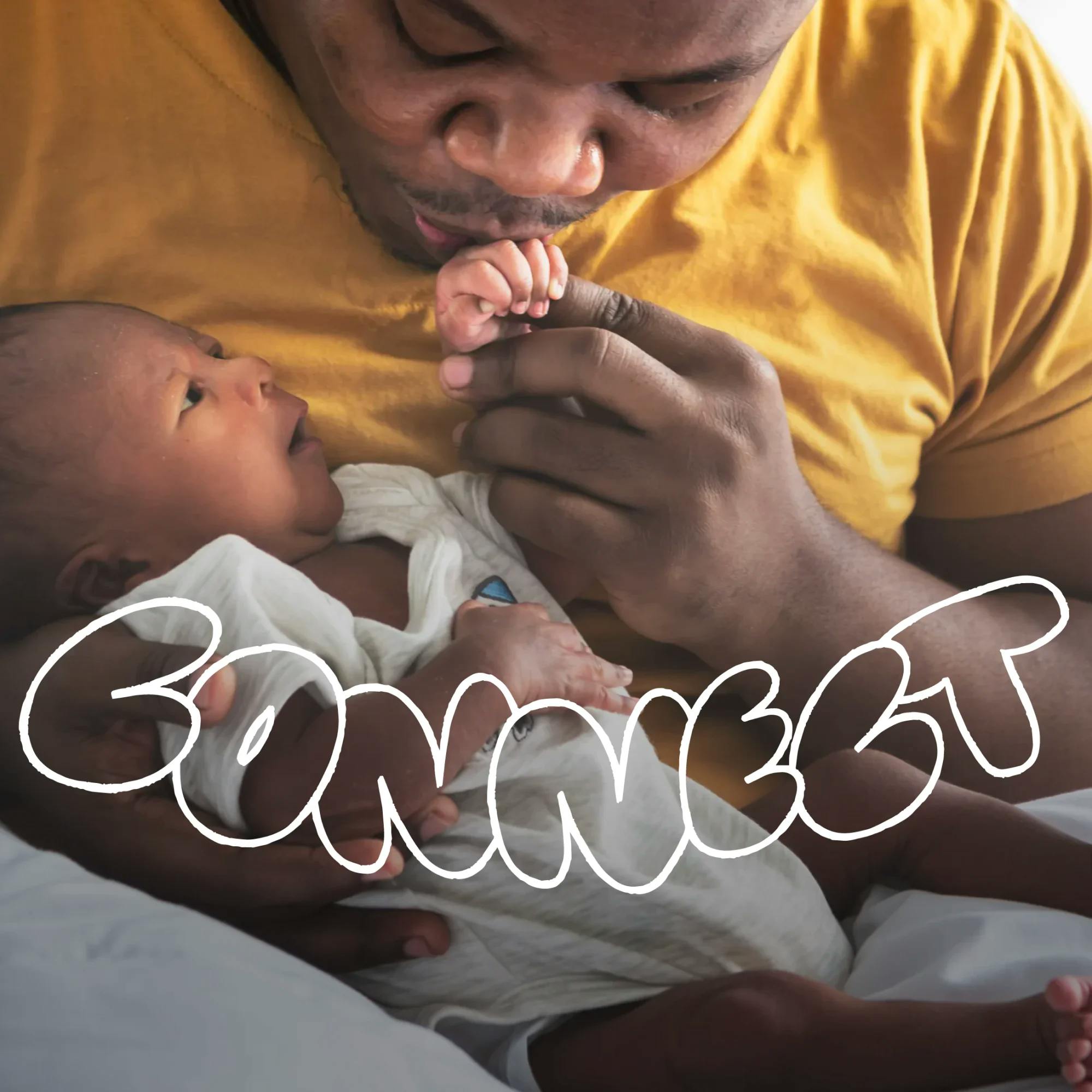
What does parentese sound like?
In order for baby talk to help children with their language skills, the adult still needs to use proper speech, even if we’re changing the cadence or melody of our voice. It’s important to avoid using incorrect grammar or substituting silly sounds for actual words. For example, using exaggerated baby talk to say, “Put the shoes on your feet,” is better than saying, “Put the shoezies on your widdle toesies.” That would be teaching your baby incorrect words and speech sounds–not what we want to do! Here are the language characteristics that make up parentese:
Speaking at a higher pitch
Speaking slowly and clearly
Elongating your vowels (for example, “Let’s read a boo-oo-k”)
Exaggerating your facial expressions (such as using lots of happy, surprised, or sad faces when reading a book or playing together)
Using a variety of engaging tones of voice
Using simple sentences with correct grammar
Check out this quick (and adorable) video showing parentese in action. These are easy changes you can make in the way you talk with your baby–and they’ll make a huge difference in your child’s language abilities!


Why should we use baby talk?
Research has consistently shown that talking frequently to your baby, and speaking in parentese, sets children up for successful language development.
For example, one study compared babies whose caregivers used parentese and spoke to them often with babies whose caregivers didn’t use this approach. The babies in the first group babbled much more between ages 6 and 14 months. At 14 months, they spoke significantly more words than the second group of babies.
Another plus to using parentese: Children respond positively to baby talk. It can help you and your child establish a loving bond. It can even help soothe some big emotions if your child is upset or frustrated.
An easy way to start speaking more parentese is to narrate, or describe, what you’re doing with your baby.
An easy way to start speaking more parentese is to narrate, or describe, what you’re doing with your baby. “We’re playing with your ball!” “I’m slicing up your grapes. We’ll eat them for a snack.” The more language your child hears, the more language they’re likely to learn–and eventually begin using themselves. Speaking regularly with your baby is an incredibly powerful way to promote their language growth, even before they’ve spoken their first word.
I know it may feel a bit silly to talk to a baby, especially when they can’t talk back yet! But I promise, while you’re modeling language for your little one, they’re soaking it all in. Think about it: If your baby doesn’t hear language from you, where will they learn it? You are your child’s language model!


Simple ways to add baby talk to your day
If you’re thinking about trying parentese with your baby, there’s no better time than right now. And I mean literally–right now. Stop for a second and think about what you’ll be doing with your baby after you read this. Are you going to change their diaper, get their bottle ready, or maybe run an errand?
Let’s pretend you’re going to leave the house together. As you get your baby ready, explain what you’re doing. Your narration could sound something like this:
“It’s time to go to the store!”
“Let’s put on your shoes.”
“Ready–sit down!”
“Now we pick up the bag.”
“Open the door. Good job opening the door!”
“Time to get in the car!”
Remember, as you narrate, use the key components of parentese mentioned earlier. Speak slow and clearly in an engaging voice. Try to use exaggerated facial expressions. I know this may feel a little funny at first. But the more you narrate these types of activities, the easier and more natural it will become!
You can set a simple goal by challenging yourself to narrate at least half of the daily tasks you complete with your baby. Making communication practice a part of your daily routine will set your child up for speech and language success.

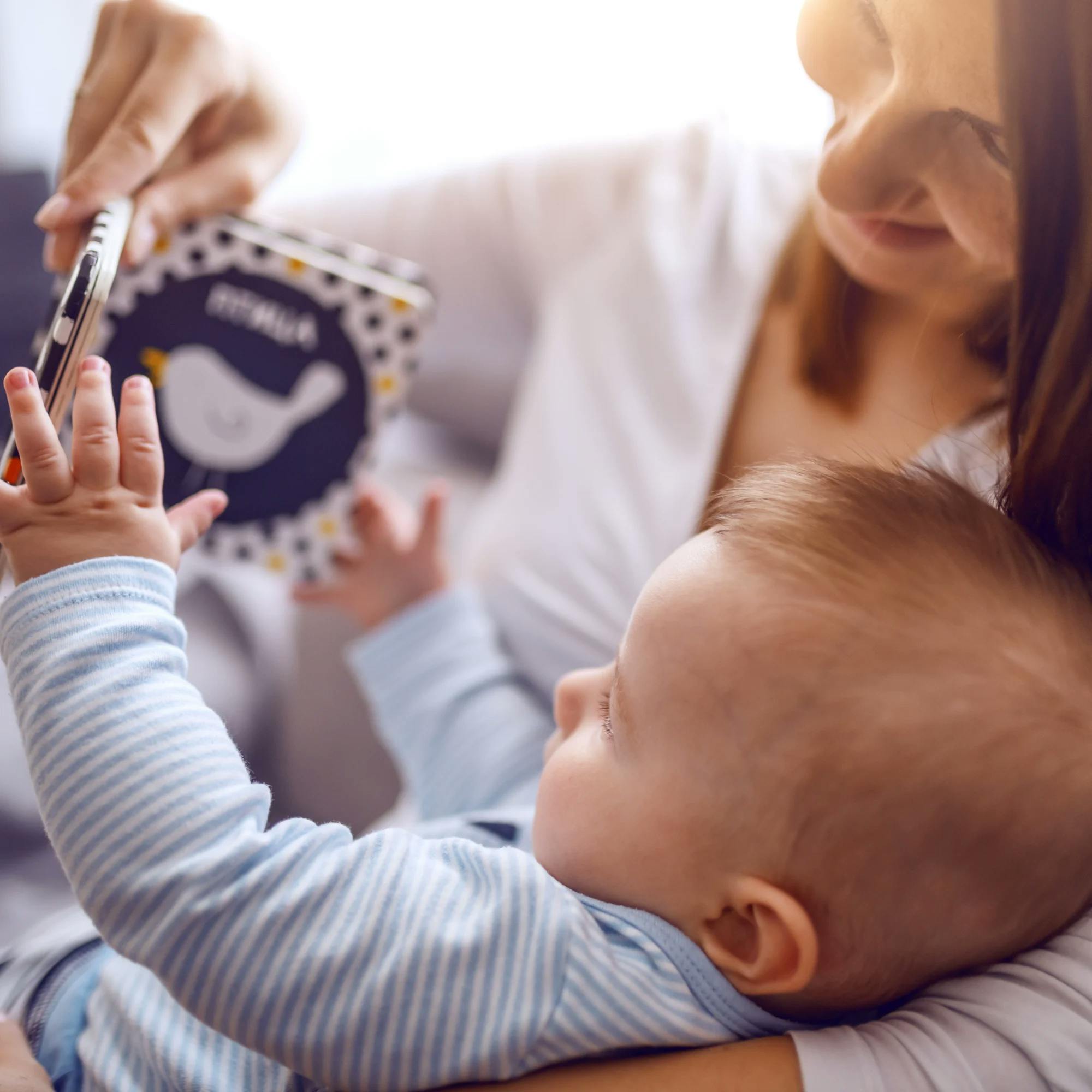
Another easy way to use parentese is while reading with your baby. Reading is an amazing way to help your child learn new words. Plus, it promotes a special bond between the two of you.
As you read out loud, use the parentese techniques we’ve covered here. You can also try some of these tips to make the most of your reading time together:
Sit in front of your baby so they can see your mouth movements as you read.
Spend time pointing to pictures.
Repeat the names of items frequently.
Read slowly, and spend as much time on each page as your baby wants. It’s OK if you need to go a little “off script” from the book!
Quick demo: How to read a book to your child like a speech therapist
Watch hereParentese isn’t a hard language to learn. The key is to build it into your daily routines and make it a habit. If it seems odd to talk to your quiet baby so often, rest assured, that’s a normal feeling. Keep it up! As a speech-language pathologist, I can’t overstate just how much you are helping your child by speaking parentese. And before you know it, these one-sided conversations will turn into two-sided ones, with your baby talking right back to you. The more you practice these tips, the sooner that day will come!
How Expressable Can Help
Concerned your child isn't reaching age-expected milestones? Looking for communication support from a professional? Expressable is a national online speech therapy practice serving children and adults. We treat all major areas of communication and feeding, offer flexible hours including evenings and weekends, and accept most major health insurance plans. We’re proud to have earned more than 3,000 5-star reviews from our clients (4.9/5 average).
Our therapy model is centered on parent and caregiver involvement. Research proves that empowering caregivers to participate in their loved one’s therapy leads to better outcomes. That’s why we combine live, 1-on-1 speech therapy with personalized education and home practice activities for faster progress.
Communication is more than words. It’s how we share how we feel and show who we are. We’re here to help you or your child do just that.

